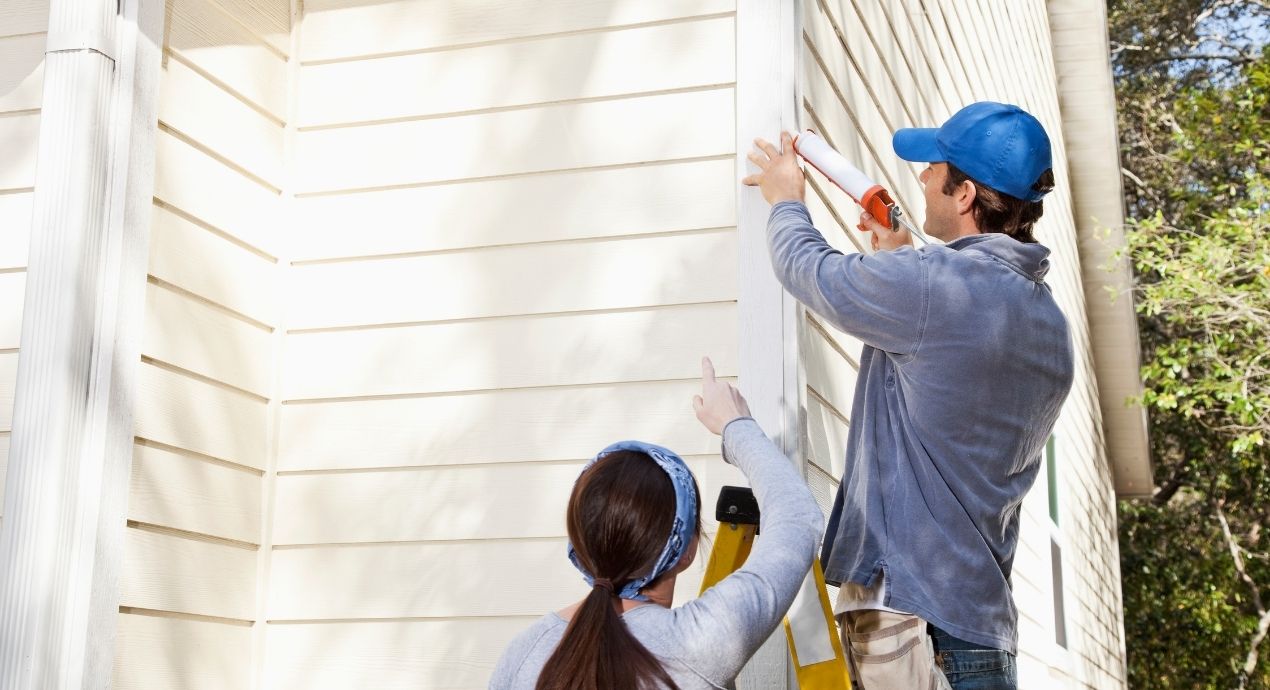
Contemplating coverage?
Subscribe to receive our emails & get
$200 off!
Have questions?
Call us: (833) 544-8273


Written By Ally Sabatina
Moving into a first home is exciting, thrilling, and… perhaps a little overwhelming. Homeownership is a big responsibility, and there are countless chores to perform to keep everything running smoothly.
A simple home maintenance list can go a long way in keeping you organized. If you’ve recently closed on your first home, this new homeowner maintenance guide will help you complete the essential tasks to perform within a few weeks of moving in.
Most household maintenance isn’t especially difficult, but it can be easy to overlook some important tasks. This list will keep you on track.
Every homeowner should be able to shut off their home’s power and water in a time-sensitive situation. Before you settle in, find the main water shut-off valve. If your home uses municipal water, this valve is usually somewhere on the inside perimeter of the street-facing side of the home. Some homes have a streetside shut-off valve at the edge of the property, near the road or sidewalk. Once you’ve identified it, make sure you have the tools and know-how to turn it on and off.
Also take the time to find your circuit breaker. Study the labeling so you know how the circuits correspond to areas of the house.
Take stock of all other controls, panels, and hatches, including thermostats, septic tank access panels, and sprinkler system controls.
There's a reason Liberty Home Guard was rated the #1 Home Warranty Service by U.S. News and World Report for 2021, 2022, 2023, and 2024. Check out our services.
Learn MoreOn day one of moving in, you should check all smoke and carbon monoxide detectors. Use the test function to confirm they’re working properly. Check the batteries and replace as needed.
Also take the time to check that the locks are functional on all doors and windows. For extra safety, it’s advisable to change or rekey your door locks.
If you have a home alarm system, change the passcode. Test each zone to ensure the alarm sounds when doors and accessible windows are opened.
Your home will feel more like your own after a thorough cleaning. Here’s a list to follow:
Take the time to study all the appliances in your home, including your refrigerator, laundry appliances, dishwasher, oven, water heater, water softener, and air conditioner. Confirm that each appliance is in good condition and working as it should. Become familiar with the controls and functions. Note which appliances may require service in the near term.
Several home appliances require filter replacements to keep things working efficiently. Check the air filters in your HVAC appliances and air conditioners. Replace them if they’re choked with soot and grime.
Next, check the filter in your kitchen exhaust fan. This may be on the underside of a built-in microwave or in a standalone unit. If you have a reusable filter that is covered with aerosolized oil and cooking residue, wash it thoroughly with warm, soapy water. If your exhaust fan uses disposable filters, purchase and install an appropriate replacement.
Finally, if your refrigerator makes ice or dispenses water, replace the internal water filter.
Clogged gutters can lead to all sorts of problems. They invite mold, mildew, and pests. They can also cause water to pool and spill over in unwanted areas, causing water damage, staining, rot, and roof leaks.
You should clean your gutters yearly—usually in the spring—but check the condition of your new home’s gutters when you move in. If you’re not confident in your ability to safely clean the gutters, hire a professional.
Mold, pests, and other problems should have been flagged in your professional home inspection, but it’s a good idea to spot check for yourself. Examine your basement, garage, attic, bathrooms, and home’s exterior for mold and mildew. Also look for signs of vermin: dead insects, rodent droppings, termite frass, and insect and rodent nests. These issues are much easier to resolve the sooner you catch them.
While you’re scanning the outside of your home for mold and mildew, also look for other potential problems. Keep an eye out for water damage, standing water, or unusually damp areas. Look for cracks or fissures in your home’s foundation, walkways, and driveway. Check your porch, deck, rails, and siding for wood rot. Confirm that skunks or raccoons haven’t made a home under your porch. Identify and carefully remove bird and insect nests.
If possible, find a detailed record of when and how your appliances and systems were serviced. If it’s been a few years since your septic system was pumped, for example, you don’t want to wait very long before scheduling service. A thorough record will give you a good idea of the condition of your home’s equipment.
Finally, create a home maintenance schedule that is tailored to your needs. Set a timeline and calendar reminders for septic pumping, filter replacements, oil deliveries, HVAC service, and so on.
The responsibilities of homeownership can be daunting, but there are resources to make things more manageable. Home buyer protection plans can help you stay on top of maintenance and save you money on repairs when appliances break down.
Reach out to the Liberty Home Guard team to learn more about how a first home buyer warranty can put more money in your pocket. Call (866)-834-5570.
Stay Ahead of Potential
Home Mishaps!
Subscribe to our Liberty Home Guard Newsletter and gain access to exclusive content that ensures your peace of mind.